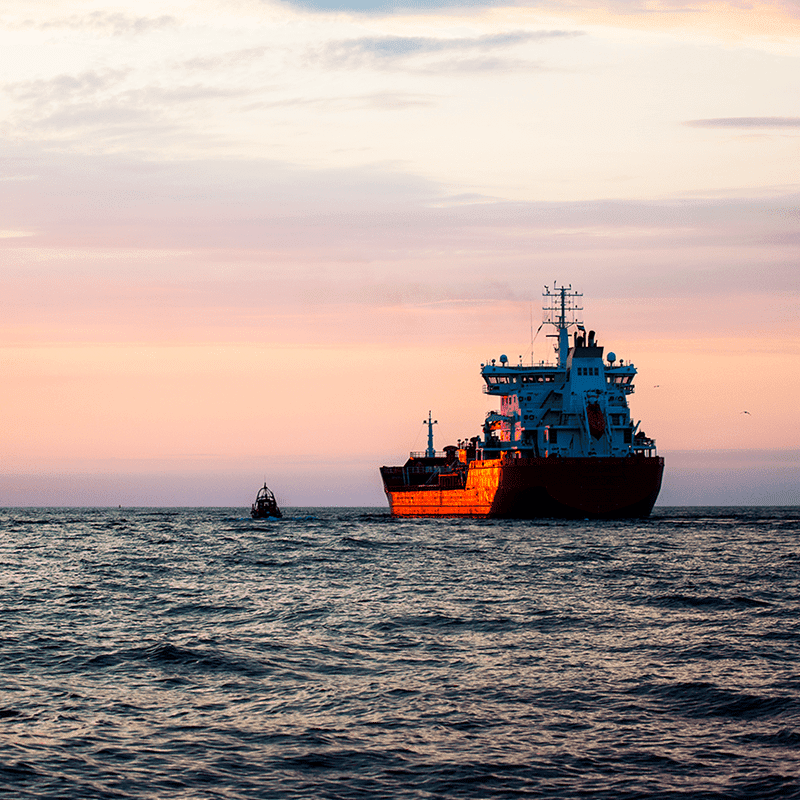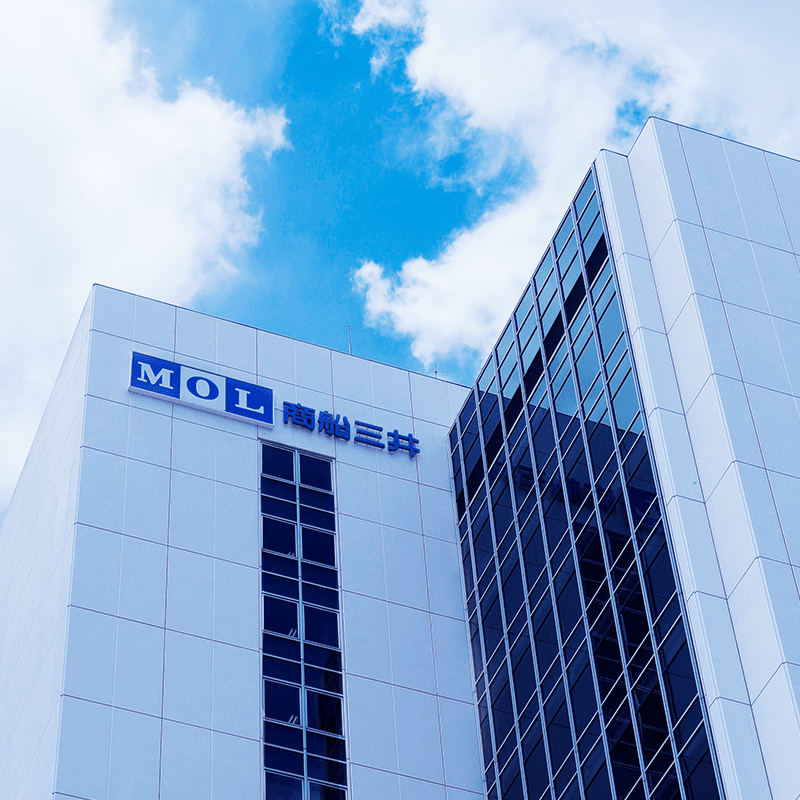BLOG
Is one of the greatest inventions of mankind in the 20th century a steel box? - Innovation that changed global logistics
- General Shipping
2020.10.26
When you hear about the greatest inventions of the 20th century, what comes to mind?
Mobile phones? personal computers? ... Many people may think of the development of IT-related technologies. However, it is not widely realized that a simple steel box “container” with an unassuming appearance was the catalyst for changing the world. In a review of Marc Levinson's book ‘The Box: How the Shipping Container Made the World Smaller and The World Economy Bigger’, management consultant Peter Drucker described the advent of the container as "an innovation that changed the world".
How did a steel box change the world?
When the "container" first appeared in the 1950s, it had a tremendous impact on the trade in goods transport and the creation of global supply chains. At that time, loading and unloading of cargoes for marine transportation was mainly done manually and inefficiently, and it was said that most of the logistics costs were due to labor costs. However, the use of standardized boxes called "containers" made it possible to transport large quantities of miscellaneous goods inexpensively and safely. Previously, cargo of varying sizes and standards were mixed and loaded on wooden pallets at the port by specialized contractors, but now cargo could be placed in containers by shippers and brought to the port. In addition, cargo loaded into containers does not need to be opened until it arrives at the place of unloading, which reduced problems during transportation and dramatically increased safety.
In a nutshell, the cost of transporting goods was significantly reduced, leading to a major change in the shape of global economic activity. Let's take a look back at the history of the container, which has been called the major innovation of the 20th Century, and examine how this "box" impacted the global economy.
History of the Container
The history of container-based logistics (containerization) dates back to 1956. At the Port of Newark, U.S.A., a crane was used to load 58 aluminum boxes onto the ship, which were unloaded at the Port of Houston five days later and transported directly to their destination by truck. This aluminum box was the beginning of the marine transportation of "containers".
The first 58-container shipment were made possible by U.S. land carrier Malcolm McLean. He has revolutionized logistics worldwide and is considered the father of containerization. McLean started in the transportation business with a single truck which has grown into becoming one of the leading transportation companies in the United States. Back in 1950, McLean was troubled by highway congestion and feared that if it continued, truck (trailer) transport would lose market share to competition from shipping companies. He then came up with the idea of transporting the whole truck by ship. At first, he considered putting the truck on a dedicated ship, but realized that by loading only the container you would secure a significantly larger amount of cargo space. He came up with the idea of a shipping container, a revolutionary concept at the time. Subsequently, he developed and put into service the first container ship, the "Ideal-X". His invention made it possible to mechanize maritime transport and led to the creation of a new system in the global logistics industry.
The introduction of container transportation, a wholly new system, was not straightforward due to standardization issues and resistance by vested interests, but its effectiveness was widely recognized during the Vietnam War in the late 1960s, and it spread rapidly within just a few years.

Progress of globalization
At the same time as the growing widespread use of containers from the latter half of the 1960s to the 1970s, the sophistication of the economy led to the globalization of production and consumption, and the flow of goods underwent huge changes in quantity, quality, and time. This fueled the need for gradually larger container ships and internationally standardized container transportation. The introduction of container transportation has made it possible to not only improve the efficiency of cargo handling at ports, but also to integrate marine transportation with land transportation by rail or truck. In this way, global manufacturing and retail supply chains expanded globally in a way never seen before.
In 1970, containerization spread worldwide, with Japanese shipping companies being a major driver in this trend. At that time, light industrial products such as clothing and shoes were also produced in Japan, and cargo from Japan accounted for 70% of the eastbound cargo on the Asia-North America trade. Japanese shipping companies first put container ships into service for the Japan-US trade, and gradually increased their size. In 1968, MOL launched its first full-container ship "the Amerika Maru" (765TEU type, photo below) on the Japan-California trade route.
%E3%81%82%E3%82%81%E3%82%8A%E3%81%8B%E4%B8%B8.jpg?width=400&height=223&name=%E5%95%86%E8%88%B9%E4%B8%89%E4%BA%95(MOL)%E3%81%82%E3%82%81%E3%82%8A%E3%81%8B%E4%B8%B8.jpg)
The significant reduction in logistic costs have enabled companies to develop more diversified business strategies. Containerization has not only brought greater efficiency and cost reduction to the shipping and transportation industries, but has also enabled companies to form across borders and global supply chains.
Following Japan's rapid economic growth after the war and the export-led economic development of the four Asian NIEs (South Korea, Taiwan, Hong Kong SAR, Singapore), China's aggressive policy of attracting foreign capital made it the world's factory, and its economic growth has been truly astonishing. This growth was underpinned by export-led economic development, with an emphasis on attracting foreign companies to the country. Container transport contributed greatly to this expansion of globalization.
World economy and container movements
The global supply chain is the thread that ties together economic activity worldwide, and there is a correlation between the growth rate of the global economy and the cargo movement of containers. (See figure below.)
Trade obviously plays an important role in the global economy, and the volume of container transportation has been increasing steadily along with the increase in the global economy. However, in 2009 the Lehman shock (financial crisis) caused the global economy to experience negative growth, and cargo movement by containers decreased due to the contraction of economic activities. In addition, due to the current Covid-19, cargo movements in 2020 are expected to be negative compared to the previous year.

(Mitsui OSK Lines created by Maritime Center, Clarksons Shipping Intelligence Service)
There is a degree of correlation between GDP growth and sea freight movements, but if you look closely at this graph, you can see that even in years when GDP growth has declined rapidly, cargo was still being transported. In fact, in 2009, the year after the Lehman shock, though the global GDP growth rate was minus 0.1% and the global cargo traffic was down 10.1%, food and daily necessities (raw materials) maintained a positive growth over the previous year. The demand for foodstuffs and energy (electricity and gas) did not decrease even during the COVID-19 pandemic, indicating that the maritime transport of goods, energy and other commodities is closely linked to people's daily lives.
The New Normal after the Coronavirus Pandemic
The IMF announced a global economic outlook of minus 4.9% in June 2020. Many countries have revised their consumption growth downward and are expected to enter a recession of a greater magnitude than that experienced following the Lehman shock.
The IMF predicts that global economic activity will bottom out in the second quarter of 2020 and then begin to recover, but it also includes a risk scenario for a second wave of infections, which would make it difficult for the economy to recover until 2021.
In a world where resources and energy are unevenly distributed, as long as there is a need to transport goods, it is our mission at MOL to support the global economy through the transportation of goods. The post pandemic world remains hazy and uncertain, but we will continue to support worldwide economic needs and make full use of our maritime transport experience and logistic supply chains, overcoming whatever challenges the post pandemic world and business environment throws at us.

(Reference) "Container Story" by Marc Levinson (Nikkei BP, 2013)

Writer:Masumi
She joined in 2002.She is experienced in secretary to the president, bulk carrier operations, HR division. She is in charge of the market research from 2018.Always looking forwards to finding the ways to help our service go beyond the world! Her favorite food is Japanese traditional sweets.
Recommended Articles
2022.07.05
- General Shipping
2021.04.13
- Energy
2023.12.19
- General Shipping
2021.08.07
- Eco Friendly
2025.03.18
- General Shipping
Latest Articles
2025.12.09
- Eco Friendly
- General Shipping
2025.12.03
- General Shipping
2025.11.20
- Energy
- General Shipping
- BLOG
- Is one of the greatest inventions of mankind in the 20th century a steel box? - Innovation that changed global logistics









